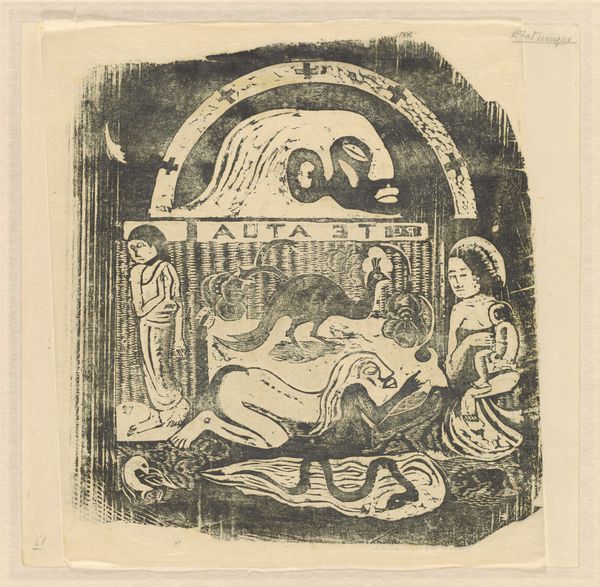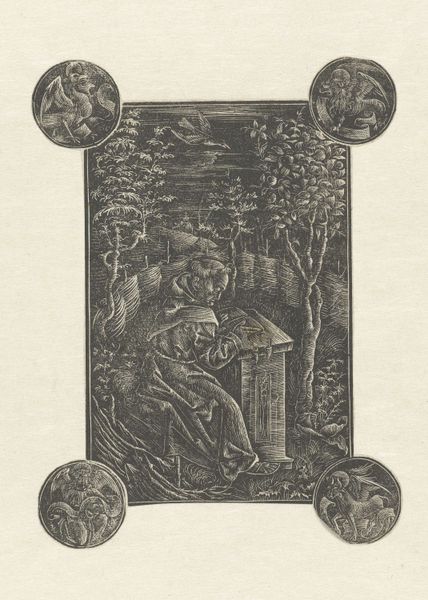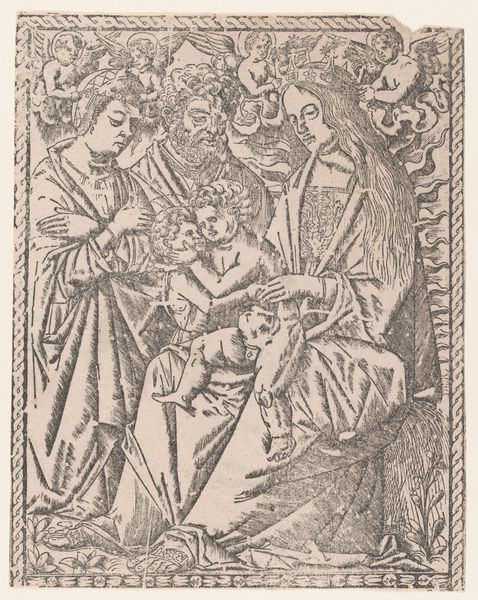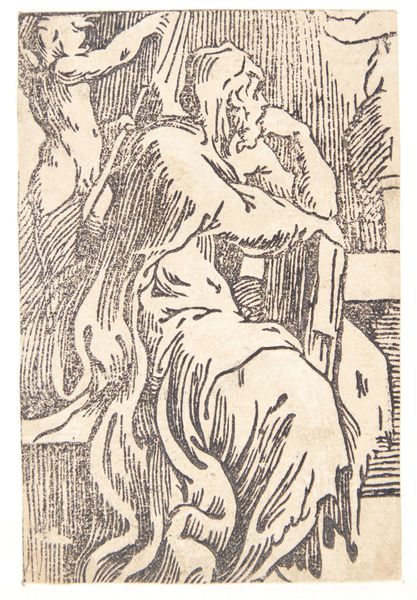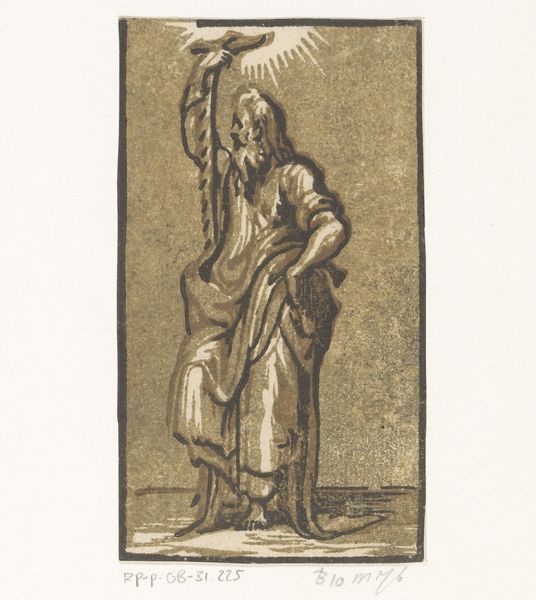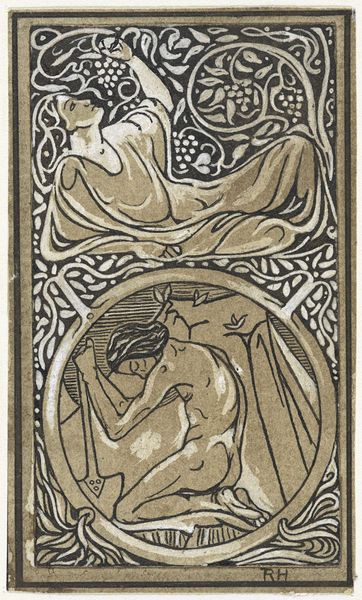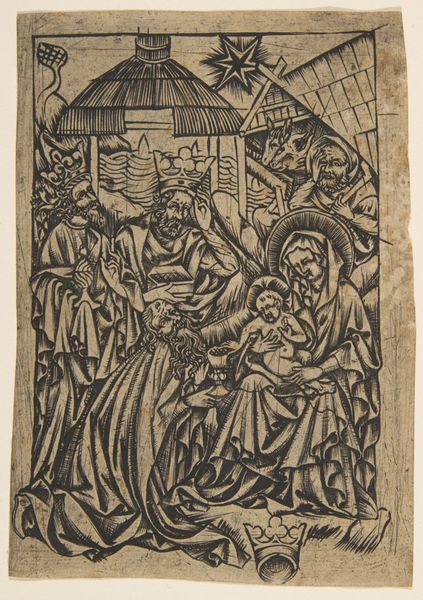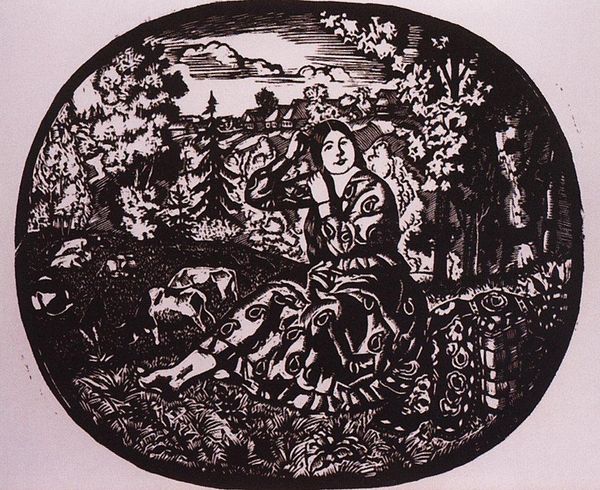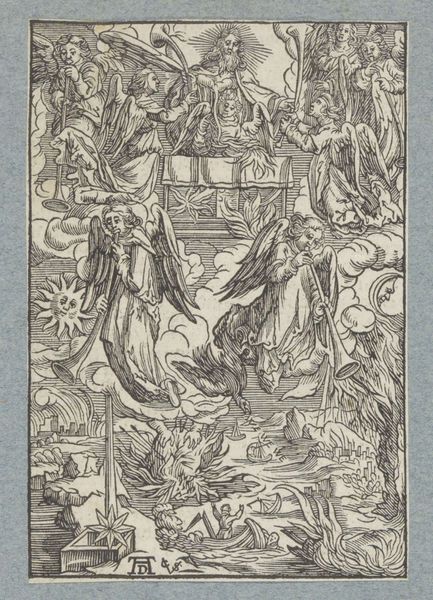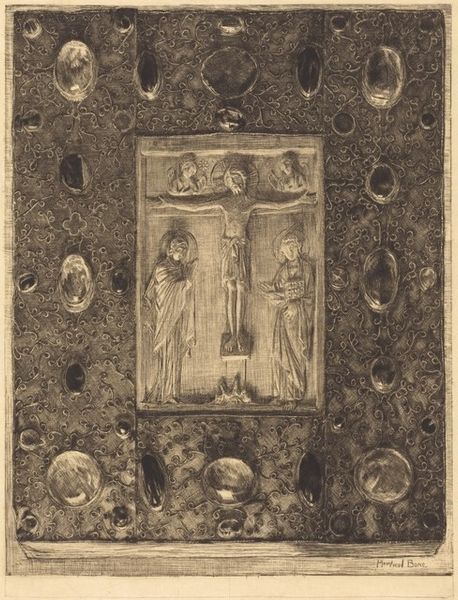
Te atua (The God), from the Suite of Late Wood-Block Prints 1898 - 1899
0:00
0:00
drawing, print, paper, woodblock-print
#
drawing
#
narrative-art
# print
#
figuration
#
paper
#
linocut print
#
woodblock-print
#
symbolism
#
post-impressionism
Dimensions: 231 × 202 mm (image/primary/secondary support)
Copyright: Public Domain
Curator: This arresting woodblock print is titled "Te atua (The God)" and it comes to us from Paul Gauguin, likely produced between 1898 and 1899. Editor: There’s a crude power to it, isn’t there? Stark contrast, almost violent carving. It feels like a visual scream. Curator: Exactly! And I think the power stems directly from the physical process. Gauguin, towards the end of his life, far from his Parisian audience, was essentially cobbling together materials. These late prints often used cheap, easily accessible wood, with rough carving techniques—he was even known to use household tools. Editor: Which speaks to its formal directness. Note how the dark, dominating figures interplay with fields of hatched textures; how the bold lines create an immediate graphic impact. The flattened perspective emphasizes the design over any naturalistic representation. Curator: The work originated from Gauguin's later years in Tahiti and the title alludes to a Polynesian god, revealing how Gauguin sought to grapple with non-Western spiritual concepts, while remaining embedded within the means and modes that allowed for creation in his place and time. He was fascinated, but always filtering through a Western gaze, I suspect. Editor: Indeed. And that filtering creates complex symbolism. Consider the recumbent figure – almost an Eve-like figure with the snake. And the smaller figures positioned on each side: are they guarding or witnessing some essential, if enigmatic, myth? The tension lies in the contrast between visual rawness and layered symbolism. Curator: We can also view these later prints through a postcolonial lens. Gauguin appropriates indigenous stories but translates them through the means available to him. He depicts a clash of cultures using materials found in a remote colonial outpost, reflecting his engagement within these systems and material realities. Editor: Ultimately, though, its visual energy dominates, wouldn’t you say? That potent graphic quality, regardless of subject matter, pulls the eye in. It is, quite simply, art communicating via shapes, values and its material expression. Curator: Agreed, it’s an intricate interplay between intention, circumstance and material result. Editor: And the end effect certainly resonates beyond a single reading, or the constraints and opportunities in Tahiti at the time.
Comments
No comments
Be the first to comment and join the conversation on the ultimate creative platform.

